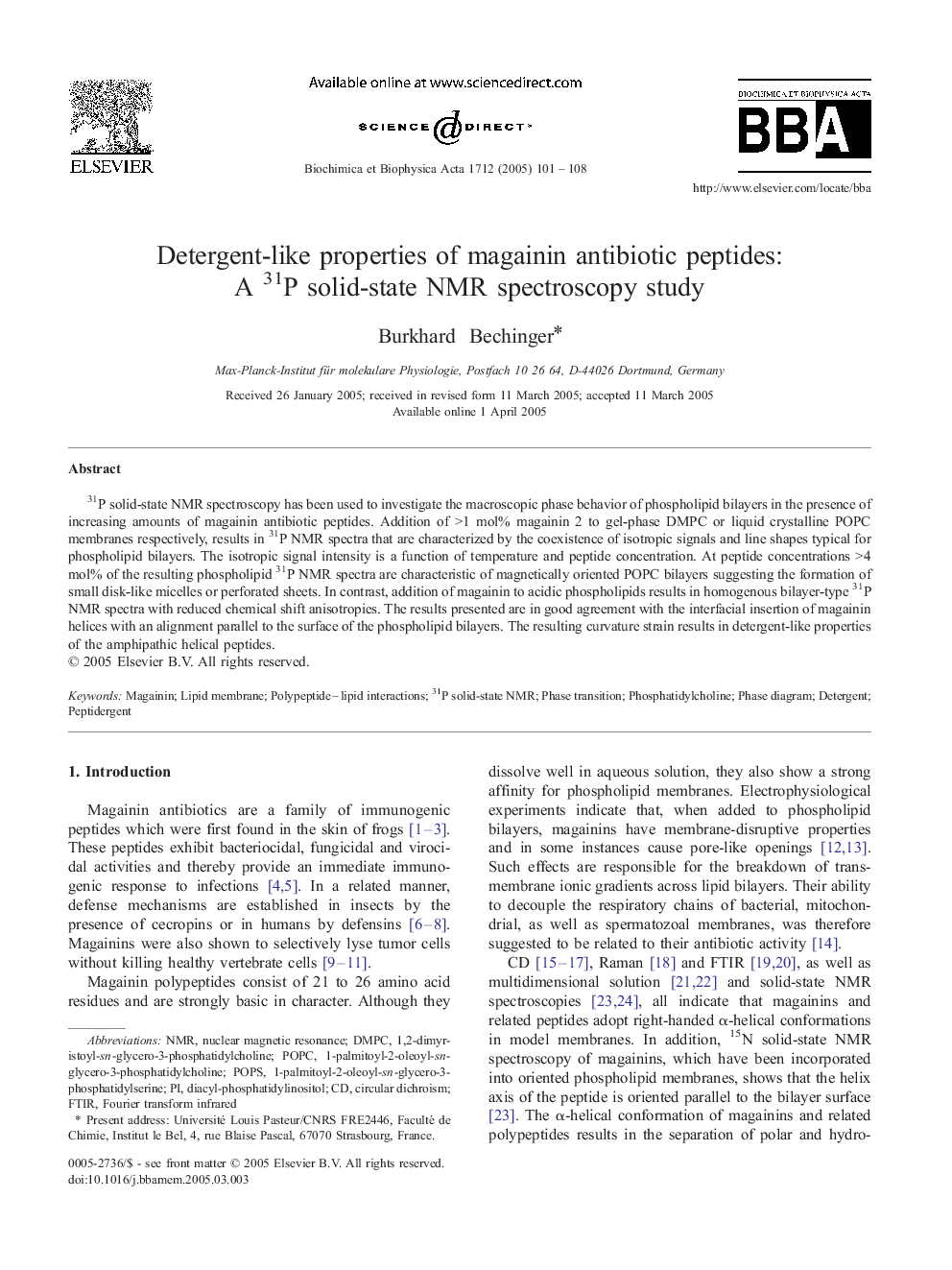| Article ID | Journal | Published Year | Pages | File Type |
|---|---|---|---|---|
| 10798335 | Biochimica et Biophysica Acta (BBA) - Biomembranes | 2005 | 8 Pages |
Abstract
31P solid-state NMR spectroscopy has been used to investigate the macroscopic phase behavior of phospholipid bilayers in the presence of increasing amounts of magainin antibiotic peptides. Addition of >1 mol% magainin 2 to gel-phase DMPC or liquid crystalline POPC membranes respectively, results in 31P NMR spectra that are characterized by the coexistence of isotropic signals and line shapes typical for phospholipid bilayers. The isotropic signal intensity is a function of temperature and peptide concentration. At peptide concentrations >4 mol% of the resulting phospholipid 31P NMR spectra are characteristic of magnetically oriented POPC bilayers suggesting the formation of small disk-like micelles or perforated sheets. In contrast, addition of magainin to acidic phospholipids results in homogenous bilayer-type 31P NMR spectra with reduced chemical shift anisotropies. The results presented are in good agreement with the interfacial insertion of magainin helices with an alignment parallel to the surface of the phospholipid bilayers. The resulting curvature strain results in detergent-like properties of the amphipathic helical peptides.
Keywords
Related Topics
Life Sciences
Biochemistry, Genetics and Molecular Biology
Biochemistry
Authors
Burkhard Bechinger,
